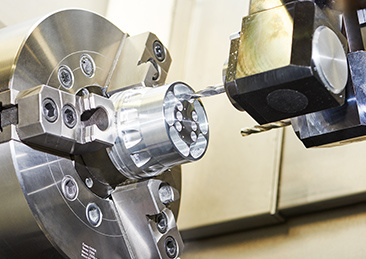Germany's Industry 4.0 points to intelligent factories
Published Time:
2018-08-01
Industry 4.0 is essentially the realization of a "smart factory." The first industrial revolution began in the latter half of the 18th century, with steam engines enabling factory mechanization; the second industrial revolution began in the latter half of the 19th century, using electricity to achieve large-scale mass production; the third industrial revolution began in the latter half of the 20th century, using electrical and information technology to achieve automation in manufacturing.
Industry 4.0 will further evolve on the basis of the first three industrial revolutions, implementing new manufacturing methods based on Cyber-Physical Systems (CPS). A Cyber-Physical System refers to the close connection of the real world through sensor networks, effectively applying the advanced computing capabilities of cyberspace to the real world. Therefore, in the production process, all data related to design, development, and production will be collected and analyzed by sensors, forming a self-regulating intelligent production system.
The dynamically configurable production methods described in the Industry 4.0 report mainly refer to the ability of robots (workstations) performing tasks to access relevant information via the network in real time, and based on the information content, autonomously switch production methods and change production materials, thereby adjusting to the most suitable production operation mode. Dynamically configurable production methods can achieve different designs, component configurations, product orders, production plans, manufacturing, and logistics distribution for each customer and each product, eliminating waste throughout the entire chain. Unlike traditional production methods, dynamically configurable production methods can change the initial design plan at any time before or during production.
For example, current automobile production mainly uses a production line method based on pre-designed processes. Although some mixed-flow production methods exist, production must still take place on production lines composed of numerous machines, preventing product diversification. The MES (Manufacturing Execution System) that manages these production lines should provide more flexibility, but it is limited by the hardware constraints of the numerous machines that make up the production line, and its functionality is extremely limited. At the same time, workers operating on different production lines are distributed across various workshops; they do not understand the entire production process and can only perform a fixed task. As a result, it is difficult to meet customer needs in real time.
In the smart factory depicted by Industry 4.0, the concept of fixed production lines disappears, adopting a modular production method that can be dynamically and organically restructured.
For example, a production module can be considered a "Cyber-Physical System," and the car currently being assembled can autonomously move between production modules to receive the required assembly tasks. If there is a bottleneck in the supply of parts for a certain model, the system can promptly allocate production resources or parts from other models to continue production. That is, it autonomously selects the appropriate production module for each model and performs dynamic assembly operations. Under this dynamically configurable production method, the original comprehensive management functions of the MES can be utilized, dynamically managing the entire production process, including design, assembly, and testing, ensuring the operational efficiency of production equipment while enabling diversified production.
In the past, we mostly heard about "product standardization," but German Industry 4.0 will promote "factory standardization."
One aspect of Germany's industrial influence is "standardization." The international standard IEC61131-3 (PLCopen) for PLC programming languages mainly comes from German companies; the widely used CAN, Profibus, and EtherCAT in the communication field were all born in Germany.
The Industry 4.0 working group believes that promoting Industry 4.0 requires action in eight key areas. The first area is "standardization and reference architecture." Standardization work mainly focuses on establishing cooperation mechanisms for each link in the smart factory ecosystem and determining which information can be exchanged. To this end, Industry 4.0 will develop a comprehensive set of common standards to enable cooperation mechanisms and optimize production processes through a series of standards (such as standards for cost, availability, and resource consumption).
In the past, we mostly heard about "product standardization," but German Industry 4.0 will promote "factory standardization." By leveraging smart factory standardization, the manufacturing production model will be promoted to the international market, using standardization to improve the market efficiency of technological and model innovation, and maintain Germany's world-leading position in industry.
Industry 4.0 in Germany has received unprecedented attention, but how to learn from Industry 4.0, especially the standardization issues in Industry 4.0, is worth further consideration.
Focus
Germany's Industry 4.0 points to intelligent factories
A new pattern of "strong supply and weak demand" is forming in the global iron ore market.
The rise of the industrial robot industry, international giant KUKA may settle in Shunde!
The freight elevator industry is entering an advanced development mode
Congratulations!! Our company is featured on the cover of the Xingxun magazine's Metalworking World







